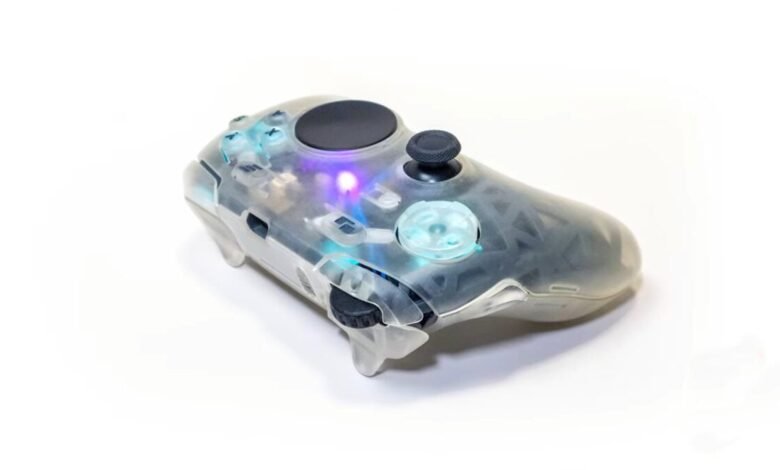This DIY Gyro Controller Is What Gamepads Should Be

▼ Summary
– Game controller design has remained largely unchanged since the 1997 PlayStation DualShock, featuring standard inputs like thumbsticks and buttons.
– A DIY project by YouTuber PyottDesign demonstrates a potential evolution for gamepads through modular and non-standard input setups.
– The “Valence Gyro Touch” controller incorporates a mouse wheel, touchpad, and gyro controls to enhance aiming precision and movement in games.
– Modern games are limited by their design for traditional controllers, restricting the adoption of more sophisticated input methods.
– There is potential for more immersive gaming experiences if the industry embraced controllers with varied and challenging input designs.
While processing power in gaming hardware has grown exponentially, the fundamental design of the gamepad has remained surprisingly unchanged for decades. Since the introduction of the original PlayStation DualShock, we’ve largely stuck with a familiar layout: two thumbsticks, a directional pad, four shoulder buttons, and four face buttons. This standardized format offers comfort and compatibility but leaves little room for meaningful innovation. However, a fascinating new DIY project from YouTuber PyottDesign demonstrates what might be possible if we reimagined controller design with modularity and advanced inputs in mind.
This inventive creation, known as the Valence Gyro Touch, builds upon concepts from PyottDesign’s earlier “Ultimate FPS” controller. That earlier model replaced the right analog stick with a trackball and incorporated a mouse wheel for smoother in-game navigation. The new design retains the mouse wheel but adopts a more conventional shape, integrating a touchpad positioned more ergonomically than on past attempts like the Steam Controller. Most impressively, it utilizes mixed input techniques on PC, combining gyroscopic controls for precise aiming with traditional analog stick movement. This hybrid approach aims to deliver the accuracy of a mouse with the fluid motion of a joystick.
Watching the controller in action reveals a highly responsive, almost twitchy input system that seems tailor-made for fast-paced first-person shooters, though it undoubtedly demands some practice to master. The build quality appears robust, though it’s worth noting that some of the underlying code was finalized using AI tools. Still, the project raises a compelling question: what creative gameplay possibilities are we sacrificing by designing almost every modern title around the same limited set of inputs?
This isn’t to suggest that every gamer should adopt something as elaborate as a Steel Battalion-style controller, but it’s intriguing to imagine what might happen if major console manufacturers took more risks. What if the next PlayStation controller took inspiration from a Formula 1 steering wheel, packed with customizable inputs and tactile feedback? The goal isn’t just adding more buttons for the sake of complexity, it’s about deepening immersion and introducing new physical and cognitive challenges.
As PyottDesign notes in his video, he’s excited to see how this new controller can push his own skill ceiling. That sense of discovery, the invitation to master a unfamiliar interface, is something often missing from mainstream gaming today. If developers were encouraged to design for more sophisticated control schemes, we might see entirely new genres emerge or existing ones evolve in unexpected ways. After more than twenty years of using the same basic template, it might be time to ask what we’re missing by clinging to convention.
(Source: kotaku)